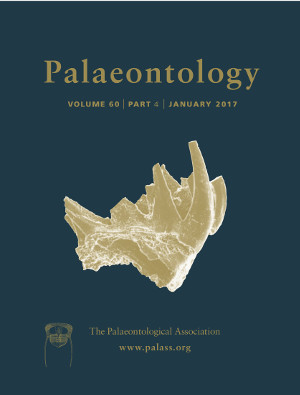Reg. Charity No. 1168330

Scolecodonts provide fossil evidence of the evolution and diversification of jaw‐bearing polychaetes from the latest Cambrian onwards. However, their record before the Darriwilian (Middle Ordovician) is scarce worldwide, which limits our understanding of key evolutionary events. One such event is the emergence of taxa possessing the asymmetrical labidognath‐type jaw apparatus architecture, which became common in the Middle Ordovician and is often dominant throughout the Palaeozoic. Here, we document a small collection of Dapingian scolecodonts from the Capillas section, Sierras Subandinas, north‐western Argentina. The isolated elements recovered allowed us to reconstruct the distinctive jaw apparatus, and to introduce a new taxon, Andiprion paxtonae gen. et sp. nov. The maxillary apparatus of Andiprion is intermediate between the symmetrognath type of the Early Ordovician Kadriorgaspis and the labidognath type that is present in polychaetaspids and related taxa. The apparatus architecture of Andiprion corresponds best to the labidognath type, but the morphology of the individual jaws suggests that it may be the most primitive representative of this lineage currently known. We propose that Andiprion‐like forms were ancestral to polychaetaspids, polychaeturids and ramphoprionids. The Capillas collection provides supporting evidence for the evolutionary homology of the ‘basal plate’ and the left first maxilla. Thus the labidognath‐type asymmetry, with an unpaired left maxilla III, developed as a result of gradual reduction in size of the first right jaw (‘basal plate’) in front of the carriers, instead of loss or fusion of anterior maxillae.